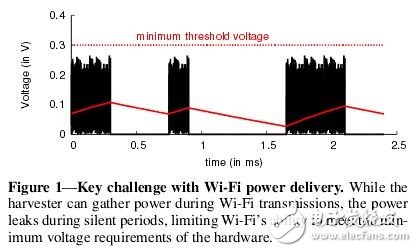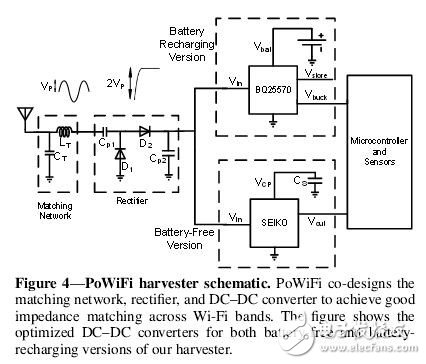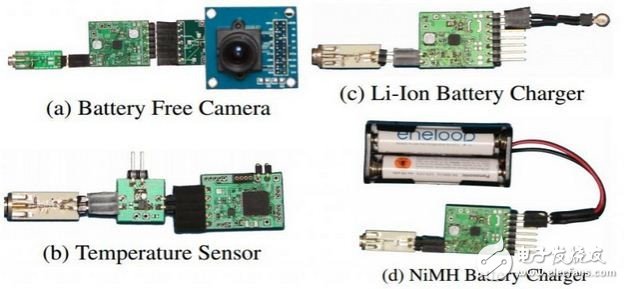Researchers such as Vamsi Talla of the University of Washington's Sensing Systems Laboratory published a "Wi-Fi charging technology (PoWiFi) that can be developed using existing Wi-Fi chipsets - "Powering the Next Billion Devices with Wi-Fi" Successfully charging temperature sensors, cameras, and several batteries, I hope to be used in IoT devices such as motion measurement in the future.

The main challenge of Wi-Fi power transmission
The current application of Wi-Fi technology mainly uses Wi-Fi radio waves to transmit and receive data. But researchers believe that it is possible to use radio waves to transmit electricity. The researchers designed the Wi-Fi receiver as a multi-channel signal collector (mulTI-channel harvester) to simulate continuous power without affecting the performance of Wi-Fi, overcoming the characteristics of Wi-Fi signals. Capable of collecting power from the Atheros AR9580 Wi-Fi chipset broadcast signal.

The antenna receives the RF signal, and the rectifier converts it to DC and feeds the DC-DC converter, increasing the voltage to match the requirements of the sensor and the microcontroller.

The figure shows an optimized DC-DC converter
In the experimental environment, the researchers set up three Atheros Wi-Fi routers with PoWiFi technology, charging the temperature sensor 20 feet away and the Omnivision VGA camera battery 17 feet away, and allowing the remote camera to shoot for 35 minutes. The task of a photo was then followed by a nickel-hydrogen and button-type lithium battery that was 28 feet away. Finally, the researchers deployed their designed systems in six homes in the metropolitan area, successfully implementing Wi-Fi charging in a real-world network environment without compromising user experience.

In addition to MIMO, the potential of PoWiFi is expected to be used in more small devices. The researchers designed a universal charger with a Wi-Fi antenna, connected to the Jawbone UP24 wearable device, placed 5 to 7 cm on the PoWiFi router, and observed that the Jawbone battery was charged from no power to 41% within 2.5 hours. . The researchers said that this shows PoWiFi routers have the potential to be wireless charging hotspots for motion measurement devices such as Fitbit and Jawbone. They are currently researching new designs, such as antennas that integrate new signal collectors into wearable devices, and custom battery charging devices to expand the use of new technologies.
But the researchers also pointed out the possible security issues of this technology. Once Wi-Fi can be used for charging and data transmission, it may also trigger a "Power denial of service" in the future, using malicious devices to cause the same The power in the network is depleted, but it also opens up opportunities for related security research.
All parties are optimistic about the growth of the Internet of Things industry. IDC predicted last year that the number of global IoT devices may reach 25 billion after 2020. IDC recently estimated that the Internet of Things market will see $1.7 trillion by 2020, including IoT devices, online devices and IT services.
To learn more about wireless charging design application skills, please click to sign up for [Wireless Charging Technology Application Salon]
Tubular Motors for Roller Blind, Venetian Blind, etc.
Tubular Motors
Home Automation Control Motors,Multiple Limits Setting Motors,Quiet Tubular Drive,Tubular Motors
GUANGDONG A-OK TECHNOLOGY GRAND DEVELOPMENT CO.,LTD. , https://www.a-okmotor.com